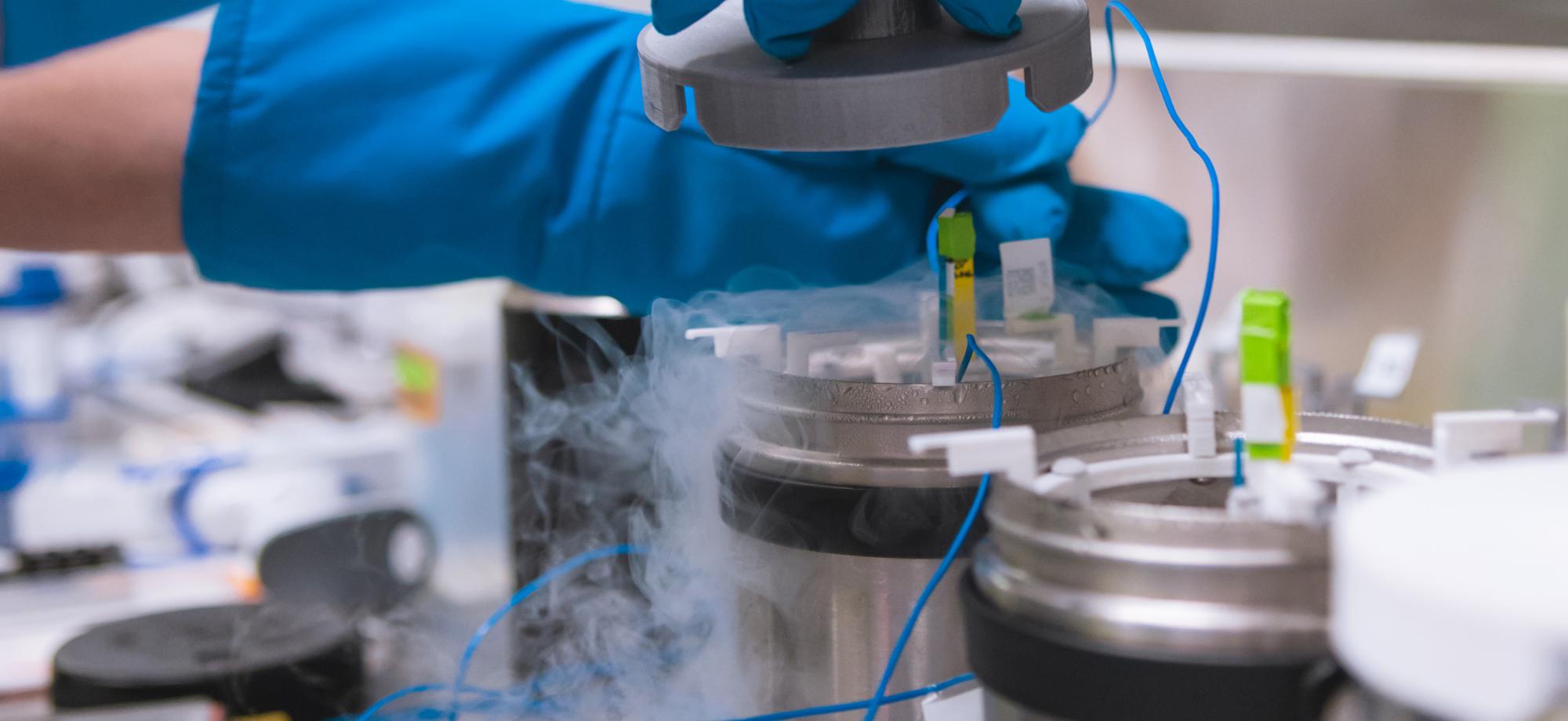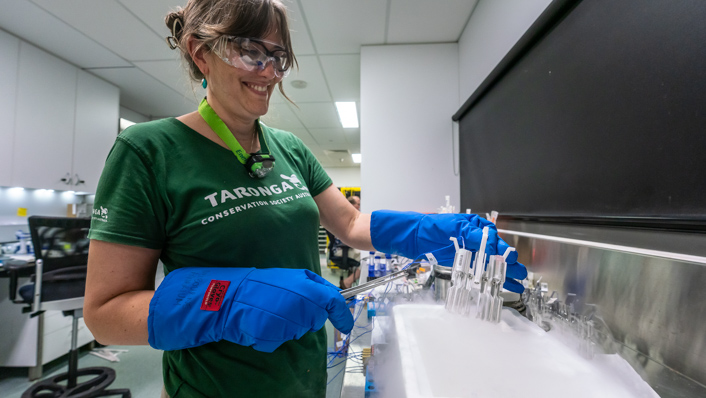As reefs experience increasing loss of coral cover due to a variety of environmental events and stressors, genetic diversity in those affected populations continues to be lost. For coral species to be able to adapt to environmental stressors like climate change, genetic diversity is the key.
Strategic cryopreservation and biobanking of living coral cells to secure genetic diversity represent one approach that can mitigate some of the genetic loss that is occurring on the Great Barrier Reef. Cryopreservation can also facilitate the selective breeding of individuals of known genotypes and support scientific discovery in coral reproductive biology.
Since the inception of our program in 2011, the team has worked in collaboration with AIMS to cryopreserve gametes from over 30 coral species across the northern, central and southern regions of the Great Barrier Reef. These samples are held in Taronga’s CryoDiversity Bank, located on Cammeraigal and Wiradjuri Country, the largest biorepository for living coral cells in the world. We have also demonstrated the ability of cryopreserved coral sperm to fertilise fresh coral eggs and produce juvenile corals. Most recently, our Reef Restoration and Adaptation Program-funded work found that the sperm freezing and in vitro fertilisation technologies can be up-scaled to support larval production and aquaculture at restoration relevant quantities.
Collection during the 2025 Great Barrier Reef spawning event
The Taronga team will work alongside AIMS scientists during November at the National Sea Simulator using cryopreservation and biobanking to secure coral genetics from threatened populations. Our work with gametes (sperm and eggs) from wild corals held temporarily at the National Sea Simulator as well as long-term held species involves experimentation to continuously improve efficiencies and scalability of our biobanking protocols. Sample vials from high priority coral species and colonies including heat-tolerant corals are barcoded with permanently recorded information of their sea Country of origin. These carefully cryopreserved samples will be transported for culturally-safe secure storage at Taronga’s CryoDiversity Banks in NSW, building on the genetic diversity and regional representation of coral genetics the existing biorepository.
In December, the Taronga team will again work with AIMS scientists at the National Sea Simulator. In addition to banking gametes to support research and biodiversity, we will work with international collaborators to progress cryopreservation methods for coral larvae. Cryopreservation of coral larvae would provide another means to secure the genetic diversity of threatened coral species, and enable research on larval settlement, inoculation, and grow-out to occur throughout the year.
An invaluable living vault for the Great Barrier Reef
It is anticipated that cryopreservation and biobanking will play an increasingly important role in coral breeding and recovery activities. This work will also support crucial AIMS research programs such as assisted evolution and assisted gene flow through the targeted collection and cryopreservation of high conservation value genotypes, potentially including those that are tolerant to bleaching events.
Researchers
Dr Jonathan Daly (Taronga Conservation Society Australia; University of New South Wales)
Dr Justine O’Brien (Taronga Conservation Society Australia; University of New South Wales)
Abbey Whitelock (Taronga Conservation Society Australia)
Dr Mary Hagedorn (Smithsonian Conservation Biology Institute)
Nikolas Zuchowicz (University of Minnesota)
Dr Line Bay (AIMS)
Andrea Severati (AIMS)
This research is supported by:
The Reef Restoration and Adaptation Program funded by the Partnership between the Australian Government's Reef Trust and the Great Barrier Reef Foundation
Taronga Conservation Society Australia
Coral Research and Development Accelerator Platform (CORDAP)
AIMS
This page was updated in October 2025


